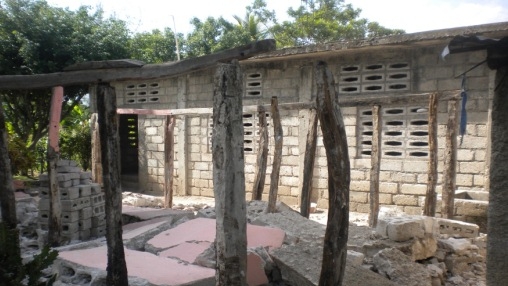Challenge
The Bank had not engaged in the Haiti education sector for eight years and the sector was in a weak state. The primary net enrollment rate was 71 percent in 2006, with a primary level completion rate of 66 percent. An estimated 500,000 children aged 6-11 did not attend school of any kind, and only about half of all six year olds were enrolled in first grade.
More than 80 percent of all primary level students attended non-public schools. The Living Conditions Measurement Survey revealed that 43 percent of all parents (50 percent for parents in the lowest income quintile) did not send their children to school because of the costs of school tuition, books, uniforms and transportation for the private-based education system.
Curricula were outdated and not relevant for over-age students who made up the bulk of the primary education population. Teaching practices were “chalk and talk”, requiring students to recite words and phrases they frequently did not understand. In addition, about 75 percent of all teachers lacked adequate training with many having just a 9th grade education, with no formal teacher training.
Affecting both quality and access was the state of children’s nutrition as approximately 40 percent of Haitian children suffered from a caloric deficit of an average of 460 kilo-calories per day. Many school children were commuting long distances from home to school, often without eating any breakfast. The challenges of implementation became far more difficult when the January 2010 earthquake hit Haiti, killing 200,000 Haitians. The Bank responded to the damage, death and chaos caused by the earthquake with substantial additional financial and supervisory resources so that the Project could continue delivering services to the beneficiaries.
Approach
Successful implementation depended on a number of factors: (i) the proper functioning of the public financing mechanism that applied school eligibility rules; (ii) proposal evaluation/ranking criteria; (iii) transparent, multi-stakeholder mechanisms to choose participating schools; (iv) use of the commercial banking system to make transfers to school management committees; (v) extensive public information campaigns; and (vi) independent external monitoring of use of financial transfers. The Project was set up to deal with these challenges through the Subsidy Program Operational Manual, which is part of the grant’s overall operational manual.
The subsidy program operational manual included funding criteria, review procedures, and measures to ensure both transparency and accountability in subsidy allocations. The Project’s activities depended, in particular, on the operationalization of public-private partnerships (PPPs). This strategy meant that the Project would use public funds to support private entities, such as private schools and NGOs, in the provision of educational and nutrition services. The Project also developed capacity for measurement of educational outcomes through the Early Grade Reading Assessment (EGRA) sub-component.

